Squats have become the popular glute exercise on social media, which honestly I don’t completely understand, especially with all of the far more focused glute lifts we now have out there such as hip thrusters and weight glute bridges.
And while I get that we often turn to the squat when we want to work our glutes because they are compound exercise that allows us to move heavy weights, they aren’t necessarily the best, nor only, exercise to develop strong, powerful and sexy butt cheeks.
While lifting heavy is super important, we also need those bodyweight moves that allow us to really focus on engaging and activating the correct muscles. We have to realize that there are 3 drivers of muscle growth we can utilize and that focusing on ACTIVATION of the actual muscle is also key.
So if you want strong glutes, it’s time you not only squatted, but even started doing this FUNDAMENTAL glute move – the glute bridge!
How To Do The Glute Bridge – Proper Glute Bridge Form!
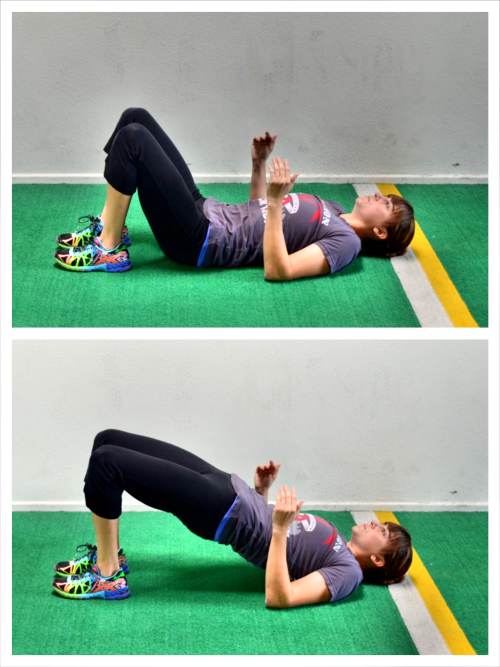
To do the Basic Bodyweight Glute Bridge, bend your knees and put your feet flat on the ground just close enough that you can graze your heels with your fingertips when you stretch your arms down by your side. Your feet should be about hip-width apart.
Bend your elbows to 90 degrees so that only your upper arm is on the ground. Press your lower back down into the ground to create a posterior pelvic tilt. This will help you protect your lower back and engage your abs as well as your glutes.
Then drive up through your heels and upper back to lift your glutes up off the ground. Drive your hips up as high as possible without arching your back. Focus on squeezing your glutes hard.
Make sure to drive through your upper back and arms as you drive through your heels. As you lift up, even think about pushing your knees toward your toes so you do not push backward off your heels. You want to drive straight up and avoid your knees caving in.
Squeeze your glutes for second or two at the top and lower all the way back down to the ground before repeating.
You should feel this move in your glutes not in your lower back.
Do not rush through the glute bridges. Take time to hold at the top and feel the glutes activate. This is the perfect time to focus on that activation by even using your MIND to concentrate on contracting the muscle harder.
If you’re struggling with this basic, but essential bodyweight move, and constantly feeling your lower back or hamstrings take over, these 3 tips to help you avoid bridging wrong will help too!
Glute Bridge Variations For Your Glutes And Hamstrings:
Make sure that as you change up and/or advance the glute bridge that you are continuing to get your hips as high up in the air as you did with the basic variation WITHOUT your lower back or hamstrings taking over…unless of course you’re purposefully using a more hamstring intensive variation. If you aren’t able to control and lift through a full range of motion, regress the move until your glutes are strong enough to complete full hip extension.
Single Leg Glute Bridge:
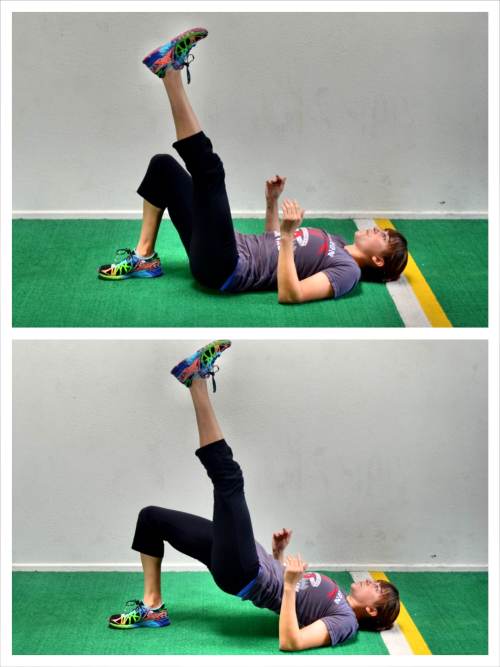
The Single Leg Glute Bridge is a great way to advance the basic glute bridge. Set up like you would for the glute bridge and then raise one leg up off the ground. You can bend the raised leg to 90 degrees or point the toe up toward the ceiling. Just make sure not to swing the raised leg as you lift.
Drive up through your heels and upper back, lifting your hips as high as you can while keeping your abs engaged. While you do want to work through a full range of motion and focus on that hip extension, you don’t want to arch your lower back simply to lift up higher.
Hold at the top and then lower back down.
Glute Bridge Off Box:
You can also advance the basic glute bridge by placing your feet up on a bench or box step. You’ll increase the range of motion you’re working through, which makes the move more challenging.
Only use a higher box if you can feel your glutes being the prime mover of this exercise. It is easy to let our hamstrings take over when we aren’t necessarily trying to work them more!
This Glute Bridge Off A Box, can be done as a single leg variation or a two leg variation.
To do this variation, place your heels up on the box. You can set them right on the edge if that helps you relax your calves, but make sure then that your bench is secure.
Do not let your butt get too far away from the box. Keep your butt close to the box to help you engage your glutes and not use only your hamstrings.
Bridge up, driving through your upper back and heels on the bench or box. Think about slightly driving your knees forward toward your toes even as you keep your heels firmly down.
To do the single leg version, lift one leg straight up toward the ceiling. Do not swing this leg to use the momentum to help you lift.
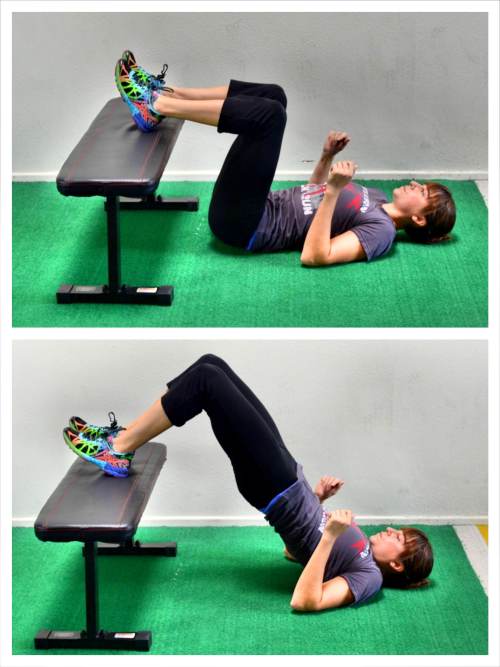
Hip Thrusters:
Another great way to increase the range of motion you’re working through, and even make the bridge a slightly more compound exercise is to do the Hip Thruster.
You can do this as a single leg exercise as well which can be a great way to correct imbalances even if you have one side that is stronger.
Here are 4 Hip Thruster Variations for strong glutes.
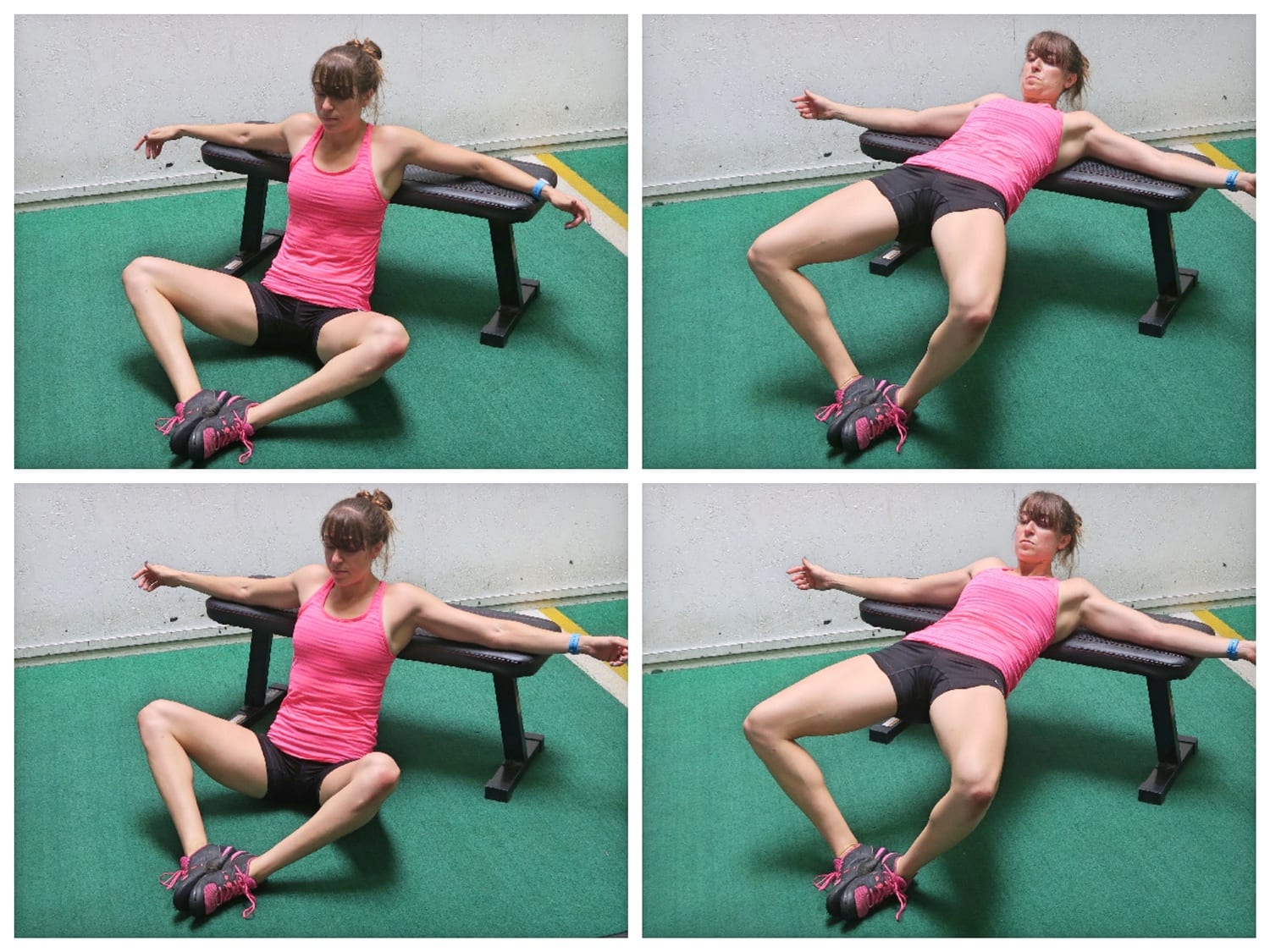
Glute Bridge and Curl:
If you want a bridge variation that is going to “kill” those hamstrings, you’ll love the glute bridge and curl! This move can be done using a suspension trainer, Power Wheel or towels/Valslides.
To do the Glute Bridge and Curl, beginners will want to start with one towel or slider under only one foot and slide out one leg at a time. You will set up in a glute bridge and then, keeping your hips up, extend one leg out at a time.
Driving through your heel, you will drag the foot back in so you are back up in a bridge. As you curl each leg back in, feel your hamstring work to pull the towel back in. If the single towel or slider move is easy, put a towel or slider under each foot and alternate legs, sliding one leg out at a time.
To perform the two leg curl, place both feet on top of one towel about hip width apart (or a towel/slider under each foot).
Start in the bridge position and slide your feet out. Keep your hips up off the ground and your glutes engaged as you slide out. Make sure your abs are engaged as you slide out. Then curl the heels back in, bringing the hips up again into a glute bridge.
Do not let the hips sag toward the ground as you slide out or come back in. Make sure your abs stay tight to protect your low back.
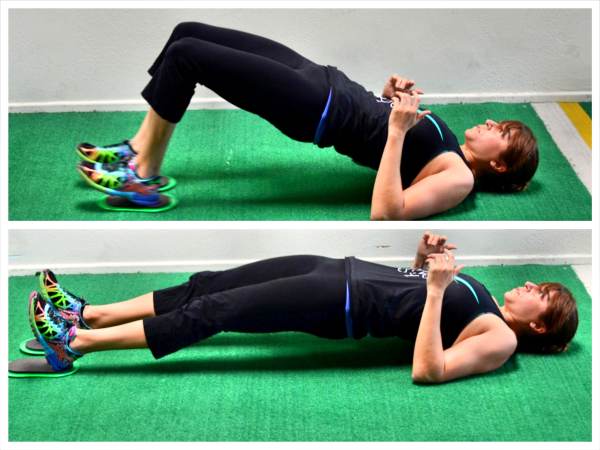
What About Adding Weight To Glute Bridges?
While glute bridges can be a great activation exercise or supplemental move, they can also be an amazing WEIGHTED LIFT to add to your lower body routines!
To do the Barbell Glute Bridge, sit on the ground and roll or place the barbell over your hips. Then lie back and bend your knees with your heels close to your butt.
Holding on to the barbell, drive your hips up and squeeze your glutes. Make sure you drive through your heels and upper back to lift straight up.
Do not let your knees fall open and do not hyperextend your low back as you squeeze your glutes at the top.
Hold for a second or two and lower back down.
As you lift, you may find you want to press the barbell down and away onto your thighs to help you squeeze your glutes at the top and keep your core engaged.

With all of these glute bridge variations, you do not want to rush through them. Focus on what you FEEL working. Focus on engaging the glutes and keeping your core tight so you don’t feel these moves in your lower back.
So if you want strong, sexy glutes? Stop focusing so much on the squat! Glute bridges are a must!
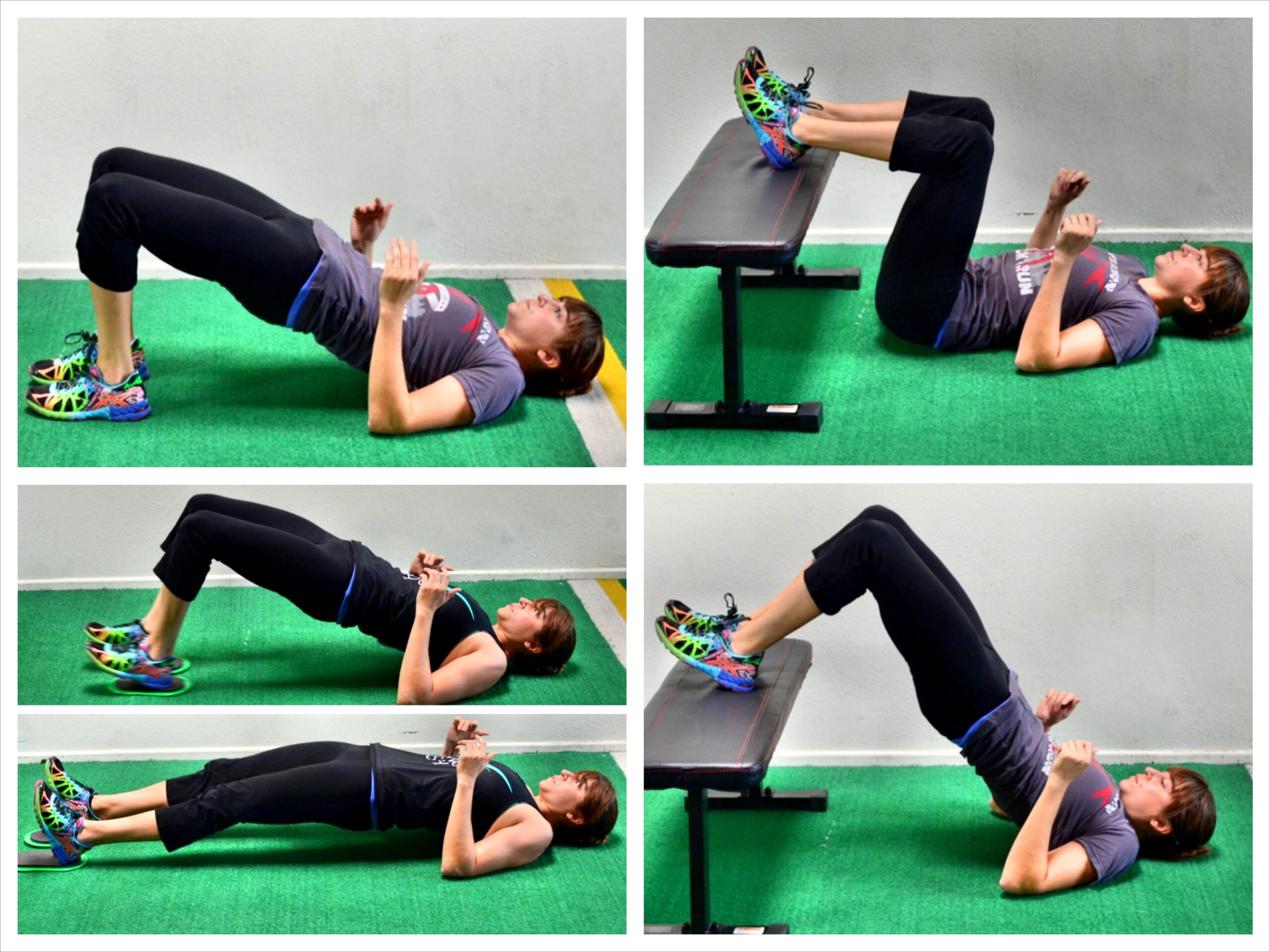


Hello. I find that when I do glute bridges I feel pain on the inside on my right knee. What could be the cause of this or should I stop doing them? Thanks
Hi Joanna…so by inside do you mean the muscle right above and inside on the front of your leg? In front or behind your knee? Behind knee cap or above or below the actual knee? It can be a lot of different things. Does it feel like pulling? If you want to email me, Cori, at [email protected], we can chat about form and figure out what is going on. If you can even send a pic or video of form I can review.
Most likely your form needs a bit of tweaking and muscles are tight. It could be as easy as placing a mini band around your knees to help you focus on activating your glutes to do the movement correctly. So email me and we can get you sorted out!
Thanks for this. Standard squats were building up my quads disproportionately. Had tried hack squats but these look better.
Glute Bridges and Hip Thrusters are definitely a great option to balance things out as well as even deadlifts! 🙂
Do you hold or go up and down?
You can actually do both. Sometimes I hold and other times I include reps. Sometimes I hold and then do reps 🙂
There are some workouts that require a 2min bridge – is this safe?
Safe…uhm…well…I guess my question really is..WHY!?! haha The point of a glute bridge is to activate the glutes. And holding for that long you risk not being able to consciously engage your glutes and your low back or hamstrings taking over. So I guess if you can consciously engage that long it wouldn’t be bad, but not something I would recommend.
Is there a tip to keep in mind to keep the emphasis on the glutes as opposed to the hamstrings? I feel like I’m using my hamstrings more than I should be when I do Glute bridges.
Adjust your foot positioning. Often the further away your feet are the more hamstring intensive. And don’t push back onto your shoulders. Drive through your upper back too and think about driving your knees over your toes even though you won’t actually do it. And posterior pelvic tilt to brace those abs can help.
Hi Cori, Its a good thing I read the whole instructions on how to do proper form to the glute bridge. I had my feet to far out when doing the bridge which explains why I was having a problems off and on with them. Bringing the feet in makes a big difference, thanks!:)
Glad it helps Tim!